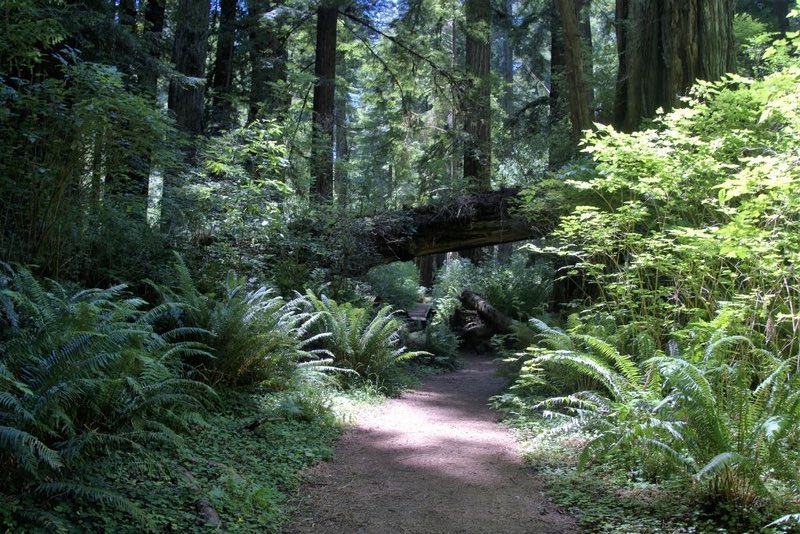
Planning a trip to the Redwood National Park and Redwood State Park, but don’t know where to begin? Whether it’s your first time visiting this national treasure or you’re returning, this 3-day Redwood National Park itinerary covers the best of the redwoods and surrounding area. Redwood National and State Parks offer over 100 miles of hiking trails in old-growth redwood forests that make for a spectacular hiking experience. Although it’s a long drive from the San Francisco Bay Area, the destination makes it worth it.
The Redwood National and State Parks is a park system that contains 4 parks: Prairie Creek Redwoods State Park, Redwood National Park, Jedediah Smith Redwoods State Park and Del Norte Coast Redwoods State Park. The 4 parks combined are a UNESCO World Heritage Site (one of only 3 in California). While it might be difficult to cover all 4 parks in 3 days, just choosing 2 parks allows you to immerse yourself in the beauty of the redwoods.
Table of contents: ()
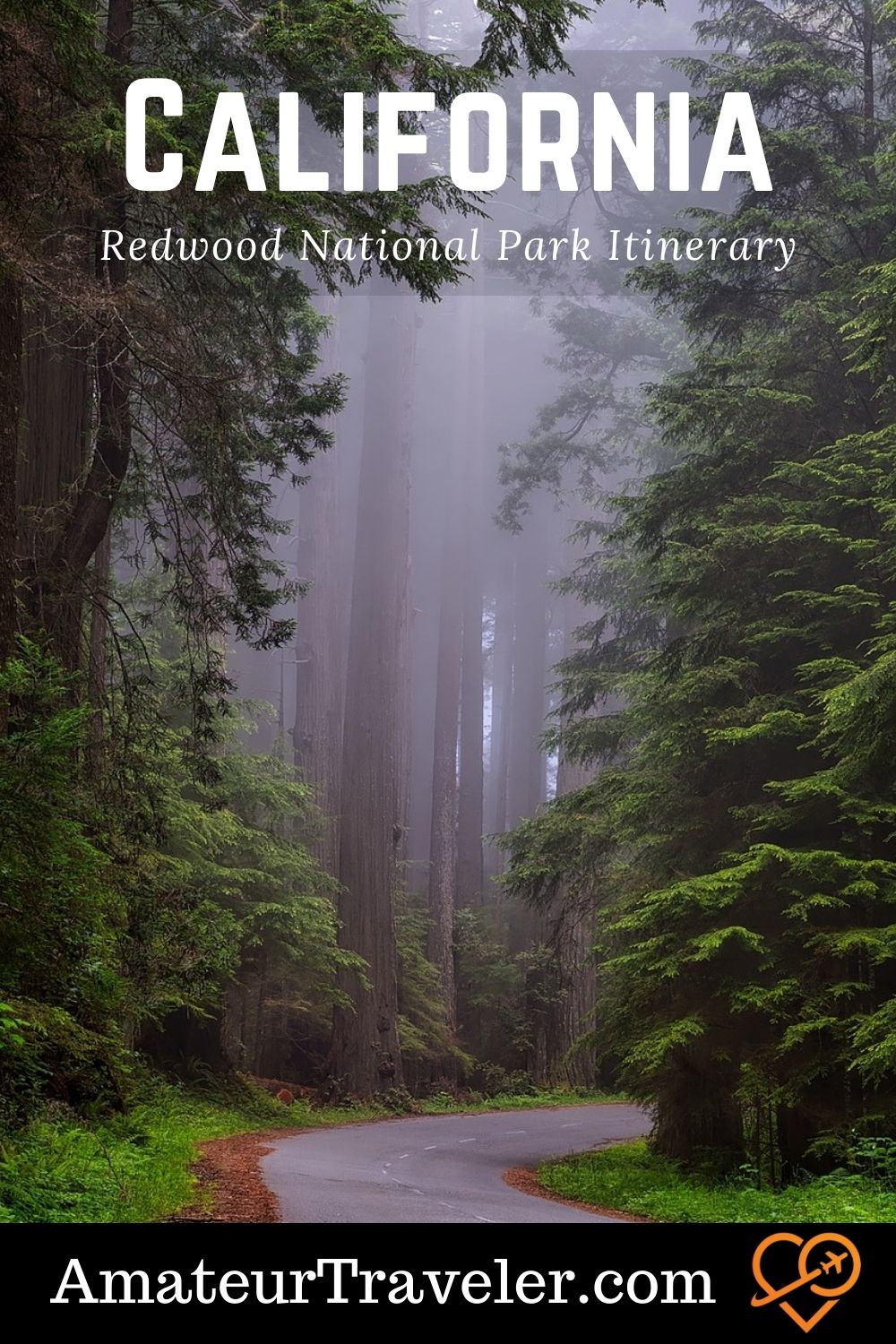
- Day 1 of the Redwood National Park Itinerary
- Day 2 of the Redwood National Park Itinerary
- Day 3 of the Redwood National Park Itinerary
- Frequently Asked Questions: Redwood National Park Itinerary
- Is it worth going to Redwood National & State Parks?
- Are these the same kind of trees trees I would find in Sequoia National Park?
- How much does it cost to go to Redwood National & State Parks?
- How many days do you need in Redwood National and State Parks?
- What is the best time to visit Redwood National and State Parks?
- How do I get from SF to Redwood National Park?
- What is the closest airport to Redwood National Park?
- What accommodations are near Redwood National Park?
- Conclusion: Redwood National Park Itinerary
Day 1 of the Redwood National Park Itinerary
Spend your first day at the Prairie Creek Redwoods State Park. Located in Orick, this park has various attractions: waterfalls, a canyon filled with fern, a beach, and Roosevelt Elk. This is why it’s best to start with the Prairie Creek Redwoods State Park on your first day.

Fern Canyon
Your first stop is at Fern Canyon. With lush ferns growing on the canyons, the sound of water running through the stream, and the occasional elk grazing nearby, the Fern Canyon Trail in Prairie Creek Redwoods State Park has it all. Fern Canyon is a small, narrow canyon filled with green ferns and heavy foliage.
This is a fairly easy 1.1-mile trail but does have a few tricky sections where you’ll need to scramble on boardwalks to prevent getting your feet wet. There are also several fallen trees across the trail that you have to climb over or under, adding some adventure to this short hike.
Fern Canyon is one of the most photogenic places in the world and it has been used as a film location a few times. Films include Jurassic Park 2: The Lost World, Walking with Dinosaurs and Dinosaurs Alive.
This hike is wet and muddy so make sure you’re wearing waterproof shoes and packing hiking essentials including another pair of dry shoes. Plan to spend 1-2 hours at the Fern Canyon.
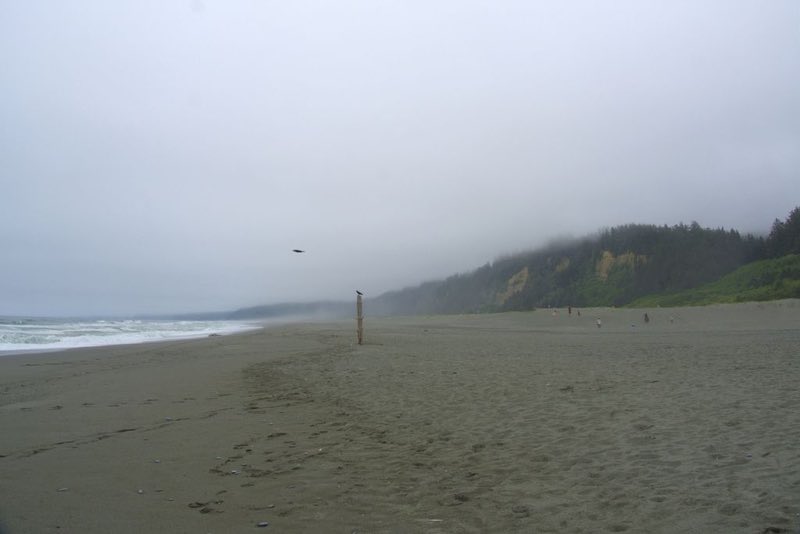
Gold Bluffs Beach
Located right next to Fern Canyon, Gold Bluffs Beach is a 10-mile-long beach, and its name doesn’t exactly come from golden-colored sand but from a story back in the 1850s. Euro-American travelers came to this beach to discover gold.
This beach is mostly uncrowded so relax here and look farther for foggy redwood trees. Allow a 1 hour to unwind on this beach. Its campground, the Gold Bluffs Beach Campground, has 24 tent and RV campsites. Each campsite has a picnic table, fire pit, grill, and food locker. If you’ve wanted to try beach camping, choose this beach. The moonlit beach, redwood trees, and roaring waves combine for a magical camping experience.

Trillium Falls
To see a waterfall among the redwoods, hike the Trillium Falls trail. It’s a 2.6-mile hike but if you just want to hike to the Trillium Falls, it’s about half a mile (1-mile round trip). This hike is moderate with an elevation of 433 feet.
The trail starts level but gets steep, especially when you’re near the waterfall. The path curves and heads uphill then downhill on switchbacks through trillium flowers, redwoods, maples, and firs until you reach the base of Trillium Falls. It’s not a big waterfall but there are several small cascades that flow into a large water body.
Other than the falls, you might notice that this trail has darker redwood trees. Plan to spend an hour to hike to Trillium Falls or 2 hours to hike the entire trail.

Revelation Trail
Located near the Prairie Creek Visitor Center is the short Revelation Trail. The trail is an easy one, only 0.3 mile long but allow an hour to read through the interpretive signs on the trail.
This trail is a wonderful way to entertain kids since they get to experience redwood trees through their senses. Each interpretive sign teaches you a redwood fact and tests one of your senses. For example, one of the areas displays a fallen redwood tree where you can count the tree’s rings. Each ring counts for each year and teaches you that these redwood trees live almost forever.
After finishing the trail, stop by the Prairie Creek Visitor Center. At this visitor center, learn about the history of the Fern Canyon, Gold Bluffs, and Roosevelt Elk.
Newton B Drury – Redwood Scenic Parkway
Once you’re done with the hikes, drive through the Newton B. Drury Scenic Parkway. It’s a 10-mile alternative to a section of US-101. To access this scenic parkway, either take exit 765 or exit 763. You can drive through this parkway within 10-15 minutes but it’s best to stop at its roadside attractions.
Stop near the Elk Prairie Campground to see Roosevelt Elk grazing in the meadows. Make sure you are keeping a safe distance from the elk. If you want to see male Roosevelt elk fighting to mate, visit between August and October.
Day 2 of the Redwood National Park Itinerary
Spend the second day hiking through Redwood National Park and visiting the Trees of Mystery attraction.
Redwood Creek Overlook
Redwood Creek Overlook shows you gorgeous views of old-growth redwood forests and second-growth redwood forests; more than 9000 acres of them! You can tell the age difference between the forests based on the color of the trees. If it’s a darker green, then its old-growth and if it’s a lighter green, it’s second-growth. Plus, if it’s a clear sky, you can also see the Pacific Ocean in the distance.
It’s a 15-minute drive (one-way) from the Redwood National Park entrance on US-101 to Redwood Creek Overlook so plan to spend an hour here before heading to the next stop.

Lady Bird Johnson Grove Trail
Ever wanted to walk among the clouds with redwood trees all around you? The Lady Bird Johnson Grove is located higher than other grove trails, so you’ll feel like you’re in the fog on the Lady Bird Johnson Grove Trail. This is an easy hike with minimal elevation that’s 1.5 miles round trip.
The trail is named after the First Lady when Lyndon B. Johnson was the president in the 1960s. She was a strong advocate for protecting nature and wildlife.
Spend up to 2 hours on this hike. Since this is at the southernmost part of the park, plan to do this hike at the end before exiting the park; so, you don’t have to drive back and forth.

Trees of Mystery
Located on US-101 in Klamath, Trees of Mystery is home to the famous 49-foot Paul Bunyan and 35-foot Babe the Blue Ox statues. This paid roadside attraction offers unique nature trails with its own attractions, a museum, and a gift shop. You’ll also see and learn about 15 mysterious types of trees.
Here, you can also take the SkyTrail Gondola, an aerial gondola ride through the forest to an observation deck. The attraction charges $20/person but costs less for kids and seniors.
Before exiting the attraction, visit the End of Trail Museum. It’s free to visit the museum and it is known to have the largest local collection of artifacts about the First Americans. You might plan to spend 1-2 hours, but this attraction has so many things to do and see; so, plan to spend the last half of the day here.
Day 3 of the Redwood National Park Itinerary
Spend the third day driving (or biking) through the Avenue of the Giants, a 31-mile scenic highway that runs parallel to US-101.
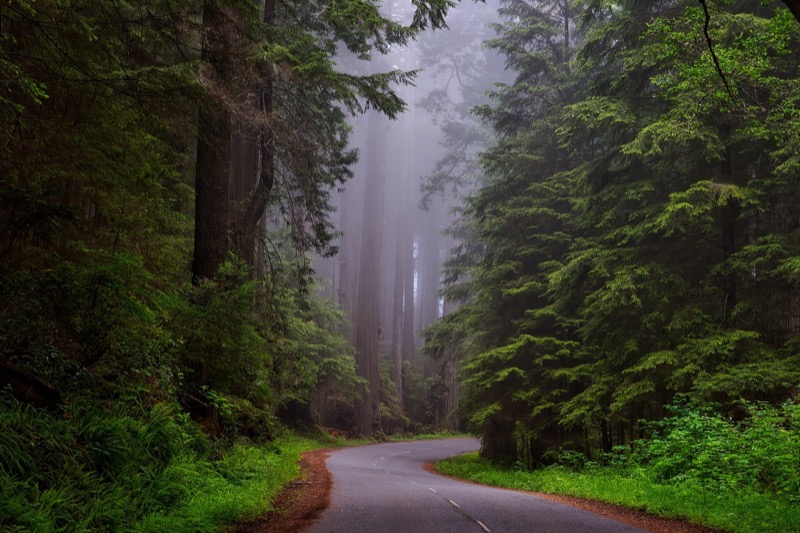
Avenue of Giants
The Avenue of the Giants winds through the ancient redwood trees. It’s just as stunning as it sounds with dozens of impressive redwood trees, some more than 200 feet tall. The trees are protected by Humboldt Redwoods State Park, which consists of 17,000 acres of old-growth redwood trees.
Before driving through the Avenue of the Giants, pick up an Auto Tour brochure for a self-guided tour. You can find brochure boxes either at the North or South entrance. While there are many hiking options on the brochure, try out some of the other roadside attractions.
- Stop by to picnic, kayak or camp at the Eel River that crosses through the Avenue of the Giants.
- Step inside two treehouses: one at the Eternal Tree House and the other at the Shrine Drive-Thru Tree Auto Park. Both treehouses offer unique experiences, so we recommend doing both.
- Drive up a log at Shrine Drive-Thru Tree Auto Park.
- Drive through a tree! There are a couple of drive-thru trees around the redwoods but while you’re at Shrine Drive-Thru Tree Auto Park, check that one out. Or the Klamath Tour Thru Tree. Both attractions require a fee.
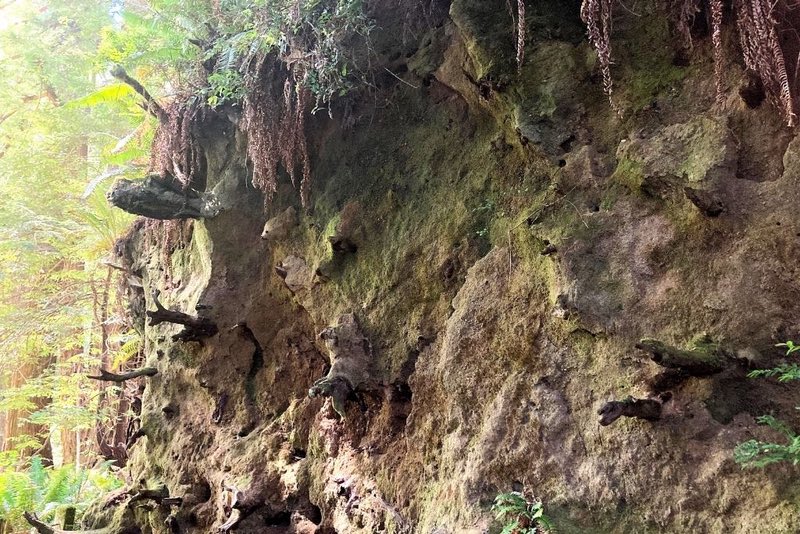
Frequently Asked Questions: Redwood National Park Itinerary
Here are some frequently asked questions about visiting the Redwood National and State Parks.
Is it worth going to Redwood National & State Parks?
Yes, it is worth it! Before the Ice Age, Earth was filled with redwood trees but afterwards most redwood forests were destroyed except for those growing in the Sierra Nevada (in and around Yosemite National Park) and coastal California. That means when you visit a park with coastal redwoods, you are visiting a one-of-a-kind forest experience that’s only known to be in this state.
Visiting this park system helps you see a vast amount of redwood trees and learn about how much they have survived through the natural forces. Plus, the parks protect an extremely diverse mix of habitats.
Are these the same kind of trees trees I would find in Sequoia National Park?
No. The redwoods in the coast are coastal redwoods (Sequoia sempervirens ) which only grown where the coastal fog comes in. The redwoods in the Sierra Nevada Mountains are giant sequoias (Sequoiadendron giganteum). The two species are related. The coast redwoods are the tallest trees in the world and the giant sequoias are the largest.
How much does it cost to go to Redwood National & State Parks?
This is one of the few U.S. National Parks that don’t require an entrance fee, which makes it even more attractive to visit. However, the park charges $8 to visit the area that contains the Fern Canyon and the Gold Bluffs Beach. The $8 is waived if you have the America the Beautiful – Annual National Parks Pass.
How many days do you need in Redwood National and State Parks?
It’s best to spend at least 3 days to a week at the Redwood National and State Parks. Spending a few days in the redwoods lets you immerse yourself amidst the majestic redwood forests. You may plan to spend a day in each of the 4 redwood parks but make time to also check out redwood attractions around the parks. There are many fantastic trails in the Redwood National and State Parks, and it’s impossible to see them all in one trip so make sure to come back for more.
What is the best time to visit Redwood National and State Parks?
The best time to visit Redwood National and State Parks is during the summer. With 80–100-degree Fahrenheit weather across California, this park is the place to escape to. The redwood trees cover the forests with their shade and shadows. The shade is soothing especially during the intense heat.
The park tends to be wetter and muddier during the other seasons. During the summer, parking might be challenging to find near the hiking trails but if you arrive early or drive around, you’ll eventually find a parking spot.
How do I get from SF to Redwood National Park?
The good news is that the route from San Francisco to Redwood National and State Parks is easy. Take Highway 101 which goes from the city to the parks. Highway 101 bisects San Francisco on Van Ness Avenue, turns into Lombard Street and Richardson Avenue and then continues across the Golden Gate Bridge. Just follow the signs for US 101.
The bad news is that the drive from the city is 5 and a half hours not counting stops. It will take longer if you leave in the afternoon or early evening when the traffic will be heading north from the city across the Golden Gate Bridge.
What is the closest airport to Redwood National Park?
The closest airport with commercial flights is Eureka (California Redwood Coast-Humboldt County Airport) which is half an hour south of the park. The airport code for California Redwood Coast-Humboldt County Airport is ACV. There are at least 3 flights a day from SFO in San Francisco.
When last I checked 4 airlines service ACV:
- aha! to Reno/Tahoe
- American Eagle to Phoenix–Sky Harbor
- Avelo Airlines to Burbank, Las Vegas
- United Express to Denver, Los Angeles, San Francisco
What accommodations are near Redwood National Park?
Conclusion: Redwood National Park Itinerary
Whether you plan on visiting Redwood National and State Parks in the near future or are simply looking for a way to escape to outdoor beauty without straying too far from the Bay Area, this Redwood National Park itinerary will help you get the most out of your trip.
In just three days, you’ll be able to explore much of the park’s coastal regions and some of its most impressive redwood groves. Whether you’re hiking in the redwoods, strolling along the coast, or meandering through scenic redwood roads, make sure to take your time and soak in the majesty of this magical place.
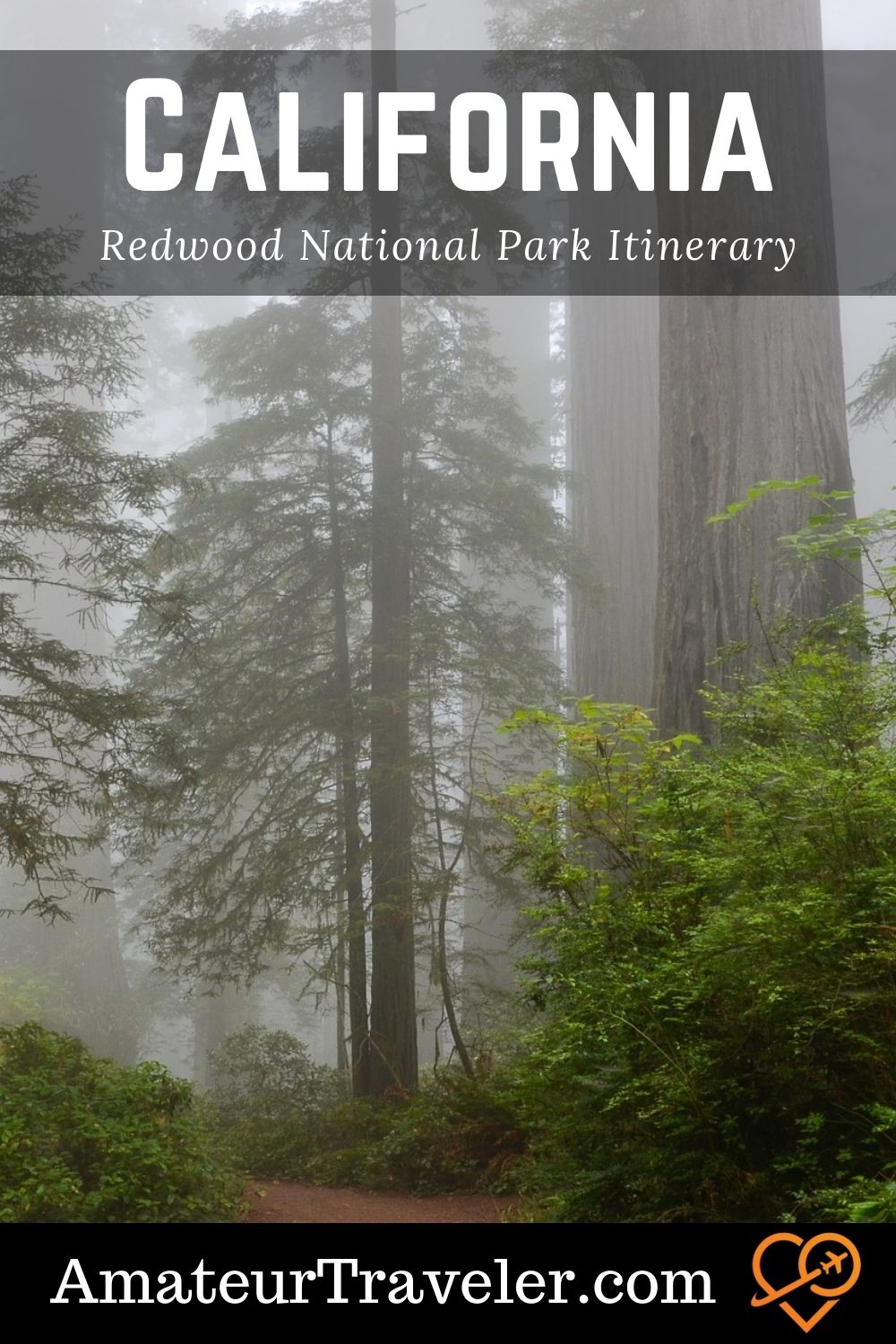

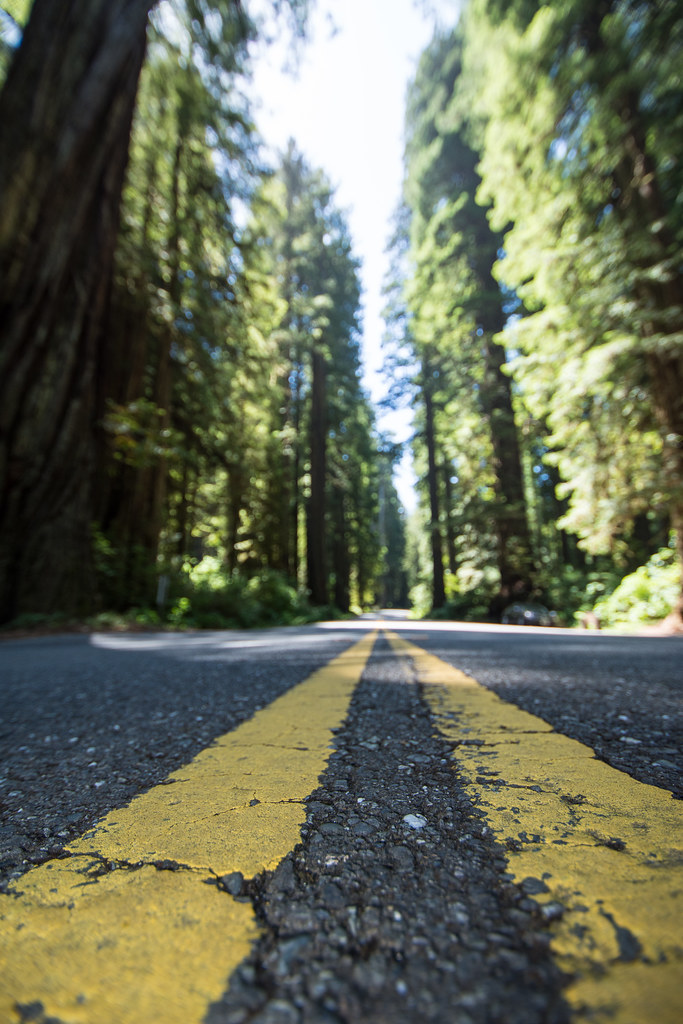
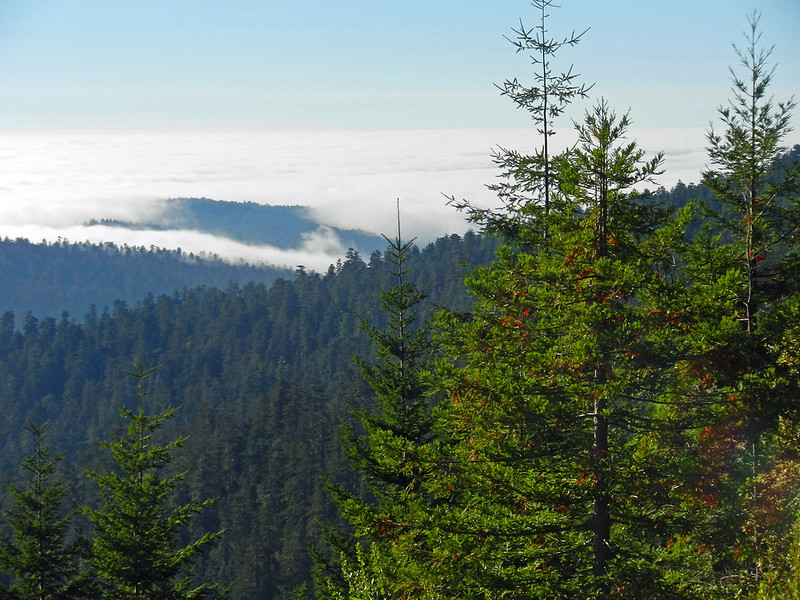

 Travel to the Marin Headlands Area of the Golden Gate National Recreation Area – San Francisco, California – Video Episode 43
Travel to the Marin Headlands Area of the Golden Gate National Recreation Area – San Francisco, California – Video Episode 43 Red Oak Victory Ship – Home Front National Historical Park, California
Red Oak Victory Ship – Home Front National Historical Park, California Alcatraz Island – The Definitive Guide to Touring Alcatraz
Alcatraz Island – The Definitive Guide to Touring Alcatraz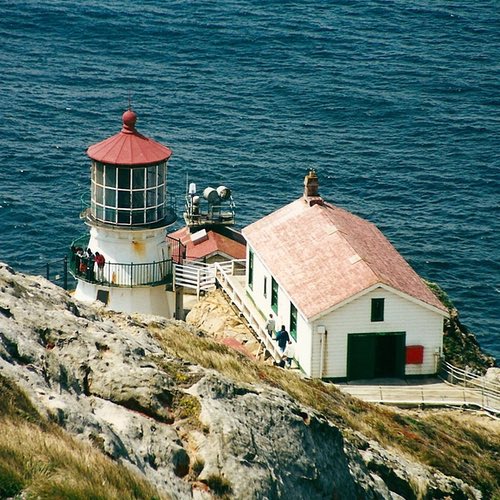 Things to do at Point Reyes National Seashore
Things to do at Point Reyes National Seashore

Elizabeth Schiman
Says:October 22nd, 2023 at 12:06 am
Is it possible to get the Redwood Forest Itinerary in printed form? We hope to go in 2024. We also have dogs who we always travel with and are wondering how this would work or would it work with them. We do not leave home without them. They are family. Thanks, Elizabeth
Chris Christensen
Says:October 22nd, 2023 at 2:41 pm
Maybe? Let me see what I can do.
Carol Angarola
Says:November 7th, 2023 at 3:58 pm
I am looking for information about a family trip to the redwood national park